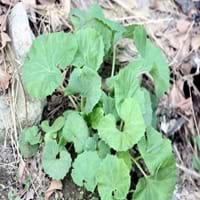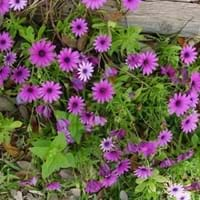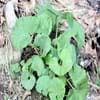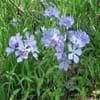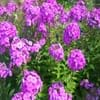Life Span
Perennial
Perennial
Type
Herbaceous Perennial
Perennial
Origin
China, Japan, Korea
Hybrid origin, South Africa
Types
Not Available
Not Available
Habitat
Lake Sides, River side
gardens
USDA Hardiness Zone
5-9
10-11
Sunset Zone
2a, 2b, 3a, 3b, 4, 5, 6, 7, 8, 9, 10, 14, 15, 16, 17, 18, 19, 20, 21, 22, 23, 24
8, 9, 12, 13, 14, 15, 16, 17, 18, 19, 20, 21, 22, 23, 24
Habit
Clump-Forming
Clump-Forming
Flower Color
Light Yellow, Ivory
Light Purple, Purple
Flower Color Modifier
Bicolor
Bicolor
Fruit Color
Not Available
Not Available
Leaf Color in Spring
Green
Green, Blue Green
Leaf Color in Summer
Green
Green, Blue Green
Leaf Color in Fall
Green
Green, Blue Green
Leaf Color in Winter
Not Available
Gray Green, Silver
Leaf Shape
Orbiculate
Elliptic, toothed
Plant Season
Spring, Summer, Fall
Spring, Summer, Fall
Sunlight
Partial shade, Full Shade
Full Sun
Type of Soil
Clay, Loam, Sand
Loam
The pH of Soil
Acidic, Neutral, Alkaline
Neutral
Soil Drainage
Poorly Drained
Well drained
Bloom Time
Early Spring, Late Winter
Late Spring, Early Summer, Summer, Late Summer, Early Fall, Fall
Tolerances
Wet Site
Drought, Salt
Where to Plant?
Container, Ground
Container, Ground, Pot
How to Plant?
From Rhizomes
Cuttings, Seedlings
Plant Maintenance
Medium
Medium
Watering Requirements
Keep ground moist, Requires consistently moist soil
Requires regular watering
In Summer
Lots of watering
Lots of watering
In Spring
Moderate
Moderate
In Winter
Average Water
Average Water
Soil pH
Acidic, Neutral, Alkaline
Neutral
Soil Type
Clay, Loam, Sand
Loam
Soil Drainage Capacity
Poorly Drained
Well drained
Sun Exposure
Partial shade, Full Shade
Full Sun
Pruning
Cut or pinch the stems, Remove damaged leaves, Remove dead branches, Remove dead leaves
Remove damaged leaves, Remove dead branches, Remove dead leaves
Fertilizers
All-Purpose Liquid Fertilizer, Requires high amount of nitrogen
All-Purpose Liquid Fertilizer
Pests and Diseases
Red blotch
Aphids, Caterpillars, Root rot, Spider mites, Stem rot, Whiteflies
Plant Tolerance
Drought, Drought and Wet Site
Drought
Flower Petal Number
Not Available
Single
Foliage Texture
Bold
Medium
Foliage Sheen
Glossy
Glossy
Attracts
Not Available
Bees, Butterflies, Insects
Allergy
Not Available
Not Available
Aesthetic Uses
Beautification
Showy Purposes
Beauty Benefits
Not Available
Not Available
Environmental Uses
Air purification
Air purification
Medicinal Uses
Antiasthamatic, Expectorant, Miscellany
Not Available
Part of Plant Used
Flowers, Stem
Flowers
Other Uses
Not Available
Air freshner, Oil is used in perfume, soaps, creams, etc., useful as a ground cover
Used As Indoor Plant
No
Yes
Used As Outdoor Plant
Yes
Yes
Garden Design
Bog Garden, Container, Water Gardens
Bedding Plant, Container, Cutflower, Groundcover, Hanging Basket, Mixed Border, Rock Garden, Wall
Botanical Name
PETASITES japonicus 'Argentea'
OSTEOSPERMUM 'Aksullo'
Common Name
Giant Butterbur, Japanese Butterbur, Variegated Butterbur
African daisy, Blue-eyed daisy
In Hindi
Japanese Butterbur
Cape Daisy
In German
japanische Pestwurz
Cape Daisy
In French
Japanese Butterbur
Cape Daisy
In Spanish
petasita japonesa
Margarita del Cabo
In Greek
Japanese Butterbur
Cape Daisy
In Portuguese
Carrapicho japonês
Cape Daisy
In Polish
japoński Lepiężnik
Cape Daisy
In Latin
Japanese Butterbur
Cape Daisy
Phylum
Tracheophyta
Magnoliophyta
Class
Magnoliopsida
Magnoliopsida
Order
Asterales
Asterales
Family
Asteraceae
Asteraceae
Genus
Petasites
Osteospermum
Clade
Angiosperms, Asterids, Eudicots
Angiosperms, Asterids, Eudicots
Tribe
Not Available
Calenduleae
Subfamily
Not Available
Asteroideae
Number of Species
Not Available
Season and Care of Japanese Butterbur and Cape Daisy
Season and care of Japanese Butterbur and Cape Daisy is important to know. While considering everything about Japanese Butterbur and Cape Daisy Care, growing season is an essential factor. Japanese Butterbur season is Spring, Summer and Fall and Cape Daisy season is Spring, Summer and Fall. The type of soil for Japanese Butterbur is Clay, Loam, Sand and for Cape Daisy is Loam while the PH of soil for Japanese Butterbur is Acidic, Neutral, Alkaline and for Cape Daisy is Neutral.
Japanese Butterbur and Cape Daisy Physical Information
Japanese Butterbur and Cape Daisy physical information is very important for comparison. Japanese Butterbur height is 60.00 cm and width 120.00 cm whereas Cape Daisy height is 20.30 cm and width 20.30 cm. The color specification of Japanese Butterbur and Cape Daisy are as follows:
Japanese Butterbur flower color: Light Yellow and Ivory
Japanese Butterbur leaf color: Green
Cape Daisy flower color: Light Purple and Purple
- Cape Daisy leaf color: Green and Blue Green
Care of Japanese Butterbur and Cape Daisy
Care of Japanese Butterbur and Cape Daisy include pruning, fertilizers, watering etc. Japanese Butterbur pruning is done Cut or pinch the stems, Remove damaged leaves, Remove dead branches and Remove dead leaves and Cape Daisy pruning is done Remove damaged leaves, Remove dead branches and Remove dead leaves. In summer Japanese Butterbur needs Lots of watering and in winter, it needs Average Water. Whereas, in summer Cape Daisy needs Lots of watering and in winter, it needs Average Water.
